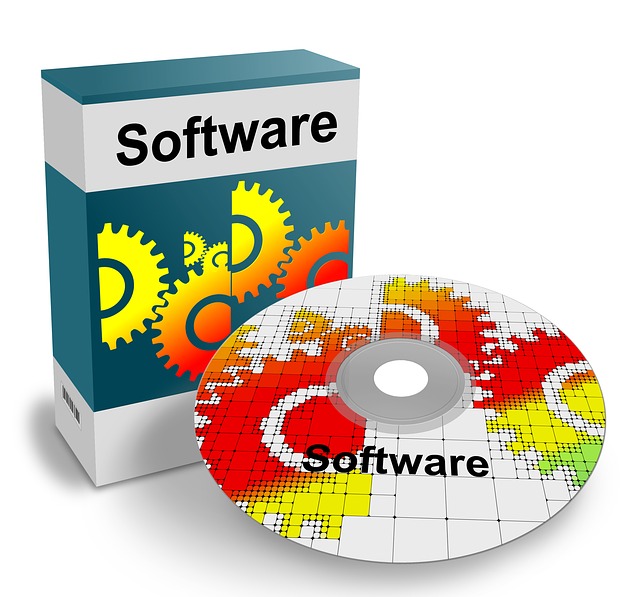Proprietary software is owned by a single company or individual, while open source code can be viewed and used freely. While proprietary software may offer more robust features and support than open source options, the cost of licensing can be an issue for some businesses. Open source software offers users the freedom to customize their experience without paying costly fees associated with traditional solutions.
What is proprietary software?
(Image by Sabine Kroschel from Pixabay )

Proprietary software is software that is owned by an individual or a company. The source code for the software is not available to the public, and people who want to use the software must purchase a license from the owner. Some examples of proprietary software include Microsoft Office and Adobe Photoshop.
What is open source software?
(Image by Clker-Free-Vector-Images from Pixabay)

Open source software is software that is released under a license that allows users to freely modify and redistribute the software. The most well-known open source license is the GNU General Public License (GPL), which was created by the Free Software Foundation. Other popular open source licenses include the MIT License and the Apache License.
The advantages and disadvantages proprietary software
Proprietary software refers to software that is owned and controlled by a company or an individual, and its source code is not freely available to the public. Here are some advantages and disadvantages of proprietary software:
Advantages:
- Better technical support: Proprietary software often comes with a dedicated technical support team that provides assistance to customers. This support can be valuable when users encounter issues or bugs.
- More features: Proprietary software is often developed by a large team of experts and may contain more features and functionalities than free and open-source software (FOSS).
- Ease of use: Proprietary software is often designed with a user-friendly interface, making it easy to use for people who are not tech-savvy.
- More stable: Since proprietary software is developed by a professional team, it may be more stable and less prone to bugs and crashes than FOSS.
Disadvantages:
- Cost: Proprietary software is often more expensive than FOSS since users have to pay for licensing fees, subscriptions, or one-time fees to use the software.
- Limited customization: Proprietary software is not open-source, which means that users cannot modify or customize the software according to their needs.
- Vendor lock-in: Proprietary software is owned and controlled by the company or individual who developed it, which means that users are dependent on the vendor for updates, bug fixes, and support.
- Privacy and security concerns: Proprietary software may raise privacy and security concerns since users cannot see the source code and do not know what data is being collected or how it is being used.
Proprietary software may offer better technical support, more features, and ease of use but it can also be costly, limit customization, cause vendor lock-in, and raise privacy and security concerns. It’s essential to weigh these advantages and disadvantages carefully when choosing software for your needs.
The advantages and disadvantages open source software?
Open-source software refers to software whose source code is freely available to the public, and users can modify and distribute the code. Here are some advantages and disadvantages of open-source software:
Advantages:
- Cost: Open-source software is often free to use, which can be beneficial for individuals, small businesses, or organizations that have limited budgets.
- Customization: Since open-source software is available to the public, users can modify and customize the code according to their needs, making it more flexible and adaptable.
- Transparency: Open-source software is transparent, which means that users can see the source code and identify and fix any bugs or security vulnerabilities.
- Community support: Open-source software is developed and maintained by a community of developers, who provide support, updates, and bug fixes to users.
Disadvantages:
- Complexity: Open-source software can be complex and may require technical expertise to install and use.
- Limited support: While open-source software has a community of developers, there may not be dedicated technical support teams available to provide assistance to users.
- Compatibility issues: Open-source software may not always be compatible with other software or hardware, which can cause compatibility issues.
- Security concerns: Since open-source software is freely available, it may be vulnerable to security threats if not adequately maintained or updated.
- Open-source software may offer cost savings, customization, transparency, and community support, but it can also be complex, have limited support, cause compatibility issues, and raise security concerns. It’s essential to weigh these advantages and disadvantages carefully when choosing software for your needs.
Why is proprietary software better?
Proprietary software is better for a number of reasons. First, it is more reliable because the company that created it stands behind it. Second, it is usually easier to use because the company that created it also provides customer support. Third, proprietary software is often faster and more powerful than open source software. Fourth, proprietary software typically has better security than open source software. Finally, proprietary software is often less expensive than open source software.
What are examples of proprietary software and open source software?
| PROPRIETARY SOFTWARE | OPEN SOURCE SOFTWARE |
|---|---|
| Microsoft Windows operating system | Linux operating system |
| Adobe Photoshop | Apache web server |
| Microsoft Office Suite (Word, Excel, PowerPoint, etc.) | Mozilla Firefox web browser |
| Apple macOS operating system | LibreOffice productivity suite |
| Oracle Database | MySQL database |
| QuickBooks accounting software | VLC media player |
| AutoCAD design software | WordPress content management system (CMS) |
| SAP business management software | GIMP image editing software |
| Salesforce customer relationship management (CRM) software | Blender 3D animation software |
| McAfee antivirus software | OpenOffice productivity suite |
How do you know if software is proprietary?
There are a few ways to determine if software is proprietary:
License agreement: Proprietary software is often accompanied by a license agreement that outlines the terms and conditions of use. These agreements typically restrict the user’s ability to modify or distribute the software.
Lack of source code access: Proprietary software does not make the source code freely available to the public, which means that users cannot modify or distribute the software without permission from the copyright holder.
Trademark or copyright notices: Proprietary software is often marked with trademark or copyright notices that indicate ownership and control of the software.
Price: Proprietary software often requires payment for a license or subscription to use the software, while open-source software is generally available for free.
It’s important to read and understand the license agreement and other terms of use before using proprietary software to ensure compliance with the restrictions and limitations imposed by the copyright holder.
Featured Image By – Gerd Altmann from Pixabay








